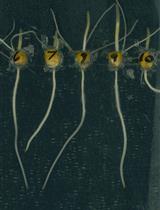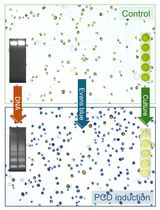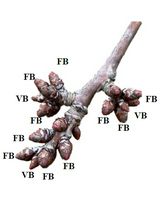- EN - English
- CN - 中文
Establishment of New Split-root System by Grafting
通过嫁接建立新的分根系统
发布: 2017年02月20日第7卷第4期 DOI: 10.21769/BioProtoc.2136 浏览次数: 9833
评审: Marisa RosaTzvetina BrumbarovaAnonymous reviewer(s)
Abstract
A new split-root system was used to simulate non-uniform salt, drought or nutrient deficiency stress in the root zone, in which the root system was divided into two or more equal portions. Here, we established a split-root system by grafting of cotton seedlings. In contrast to the conventional split-root, the main roots of the new system remained intact, which provided a better system for studying cotton response to unequal treatment in the root zone. The new system was suitable for plant growth in nutrient solution and the two root systems can fully be immerged in the nutrient solution.
Keywords: Cotton (棉花)Background
The split-root system has been used to study plant responses to heterogeneous soil conditions such as partial root drying, unequal salt distribution, and heterogeneous nutrient distribution. The conventional split-root system in cotton and other plants are established by dividing the lateral roots into two equal parts after cutting of the main root of a seedling (Bazihizina et al., 2009; Dong et al., 2010). The new system was suitable for plant growth in nutrient solution and for a girdling experiment because there was sufficient distance between the root and position of the graft (Kong et al., 2012 and 2016).
Materials and Reagents
- Plastic boxes (60 x 45 x 15 cm) (Linhui, catalog number: LH-600 )
- Sterilized wet sand
- Blade (Pao Shen Enterprises, KW-trio®, catalog number: 03541 )
- Parafilm (Bemis, catalog number: PM996 )
- Disposable cup (Jiaxing, catalog number: hot paper cup-HC02W )
- Plastic bags (Yiwu, catalog number: 10*15 )
- Cotton seeds (SCRC41, a commercial Bt [Bacillus thuringiensis] transgenic cotton [Gossypium hirsutum L.] which developed by the Cotton Research Center, Shandong Academy of Agricultural Sciences, Jinan)
- Sulfuric acid, H2SO4 (Sinopharm Chemical Reagent, catalog number: 7664-93-9 )
- Calcium nitrate, Ca(NO3)2 (Sinopharm Chemical Reagent, catalog number: 10124-37-5 )
- Potassium nitrate, KNO3 (Sinopharm Chemical Reagent, catalog number: 7757-79-1 )
- Magnesium sulfate, MgSO4 (Sinopharm Chemical Reagent, catalog number: 7487-88-9 )
- Ammonium dihydrogen phosphate, NH4H2PO4 (Sinopharm Chemical Reagent, catalog number: 7722-76-1 )
- EDTA·FeNa (Sinopharm Chemical Reagent, catalog number: 15708-41-5 )
- Orthoboric acid, H3BO3 (Sinopharm Chemical Reagent, catalog number: 10043-35-3 )
- Zinc sulfate, ZnSO4 (Sinopharm Chemical Reagent, catalog number: 7446-20-0 )
- Copper sulfate, CuSO4 (Sinopharm Chemical Reagent, catalog number: 7758-99-8 )
- Manganese sulfate, MnSO4 (Sinopharm Chemical Reagent, catalog number: 15244-36-7 )
- (NH4)6Mo7O24 (Sinopharm Chemical Reagent, catalog number: 12027-67-7 )
- Potassium hydroxide, KOH (Sinopharm Chemical Reagent, catalog number: 1310-58-3 )
- Nutrient solution (see Recipes)
Equipment
- Growth chamber (Percival Scientific, model: AR-41L2 )
- Aeration instrument (JeanPole, catalog number: B00WDWUS8W )
Procedure
文章信息
版权信息
© 2017 The Authors; exclusive licensee Bio-protocol LLC.
如何引用
Kong, X., Luo, Z. and Dong, H. (2017). Establishment of New Split-root System by Grafting. Bio-protocol 7(4): e2136. DOI: 10.21769/BioProtoc.2136.
分类
植物科学 > 植物生理学 > 植物生长
植物科学 > 植物生理学 > 非生物胁迫
您对这篇实验方法有问题吗?
在此处发布您的问题,我们将邀请本文作者来回答。同时,我们会将您的问题发布到Bio-protocol Exchange,以便寻求社区成员的帮助。
Share
Bluesky
X
Copy link













